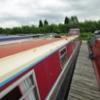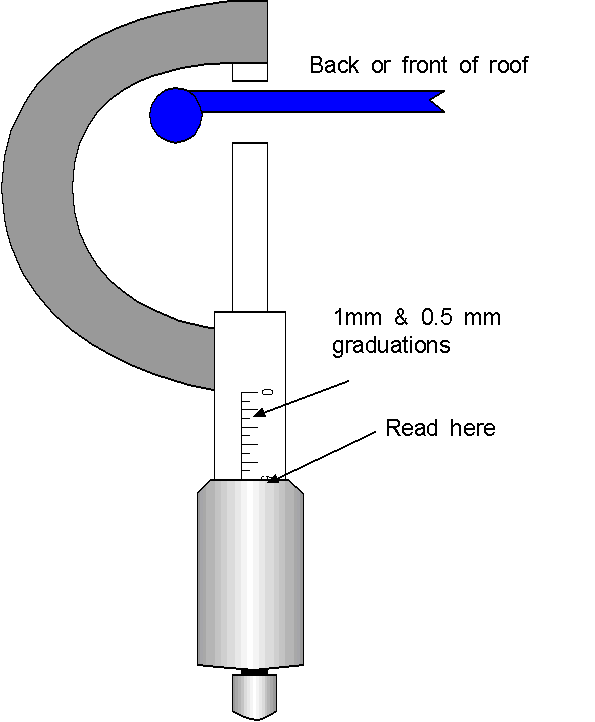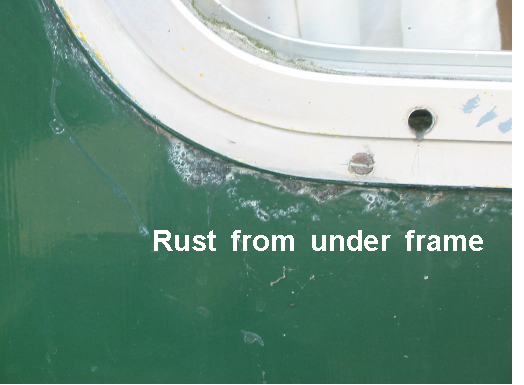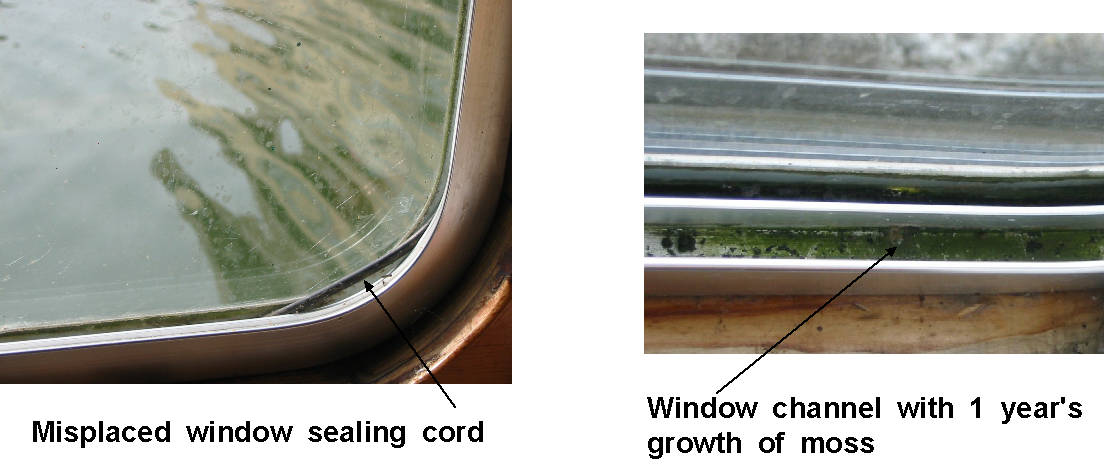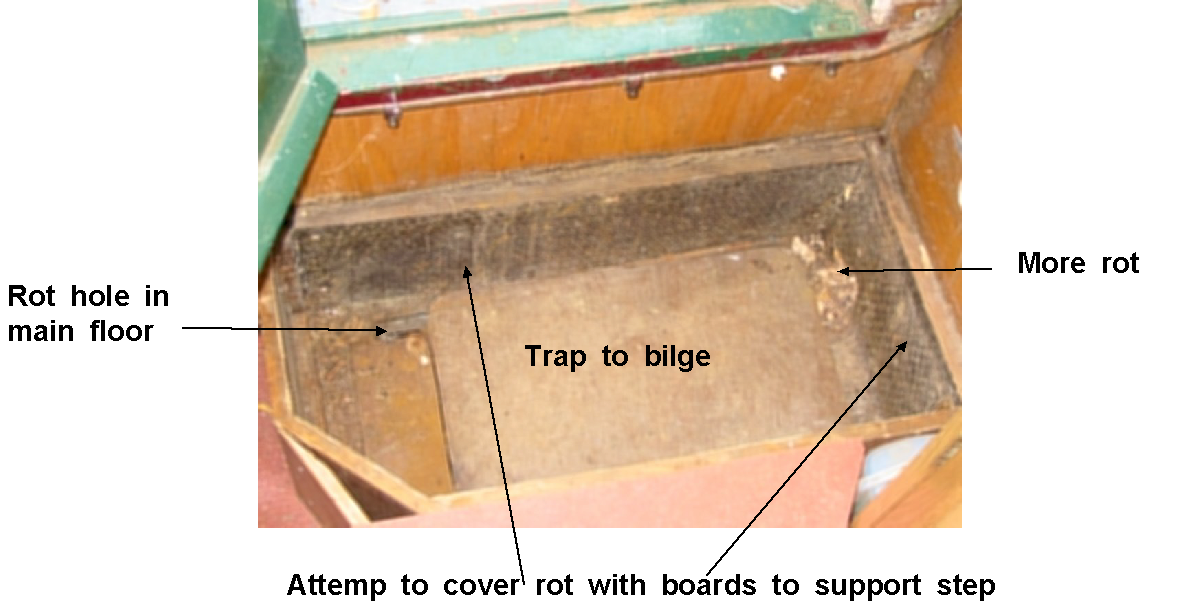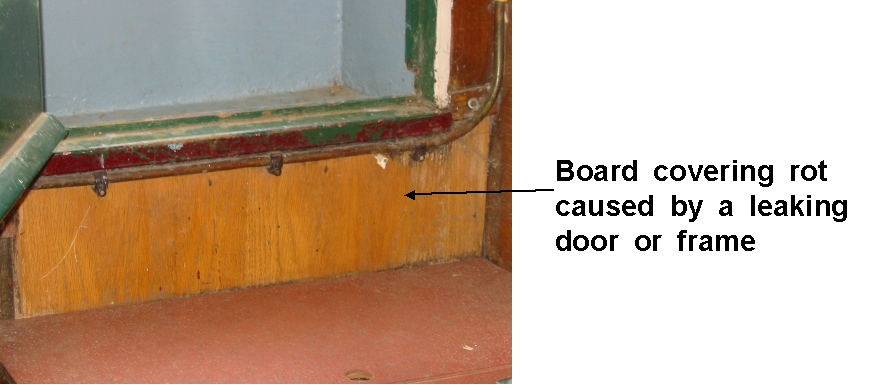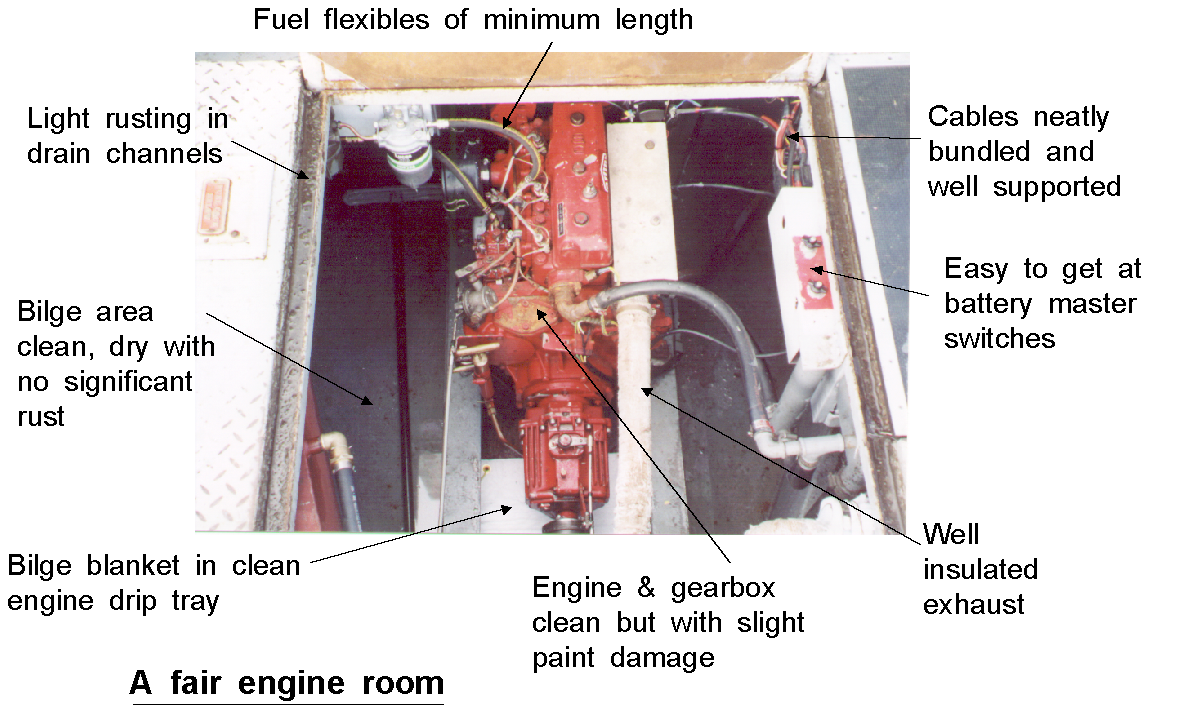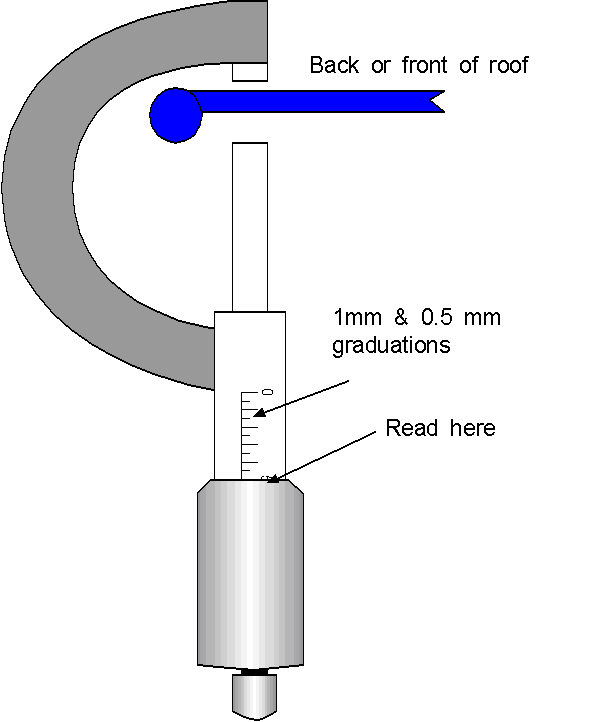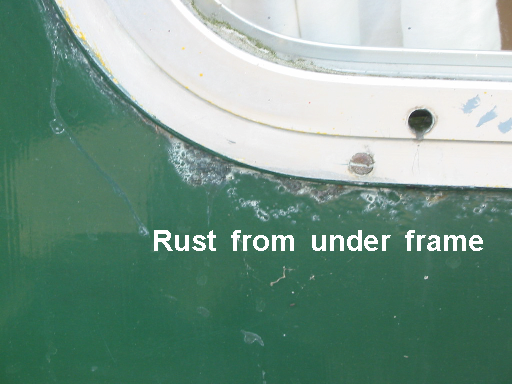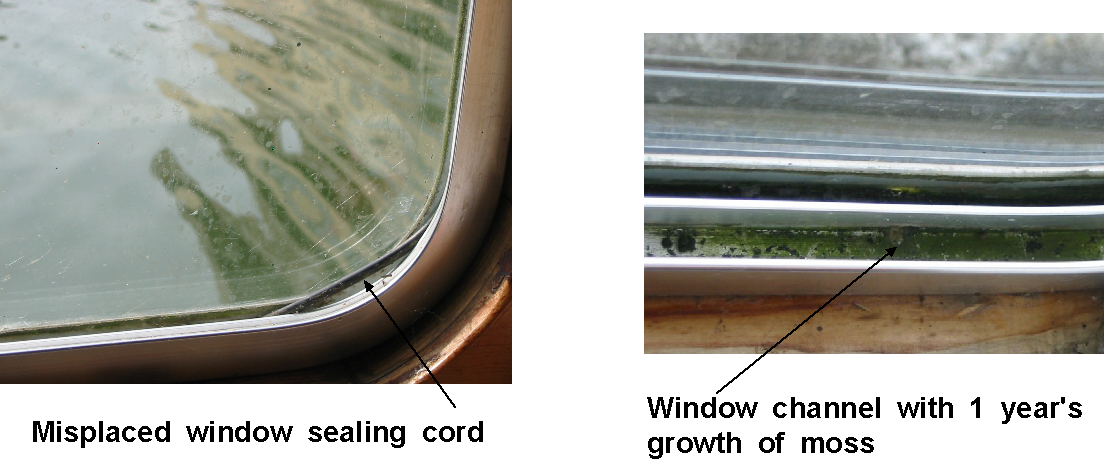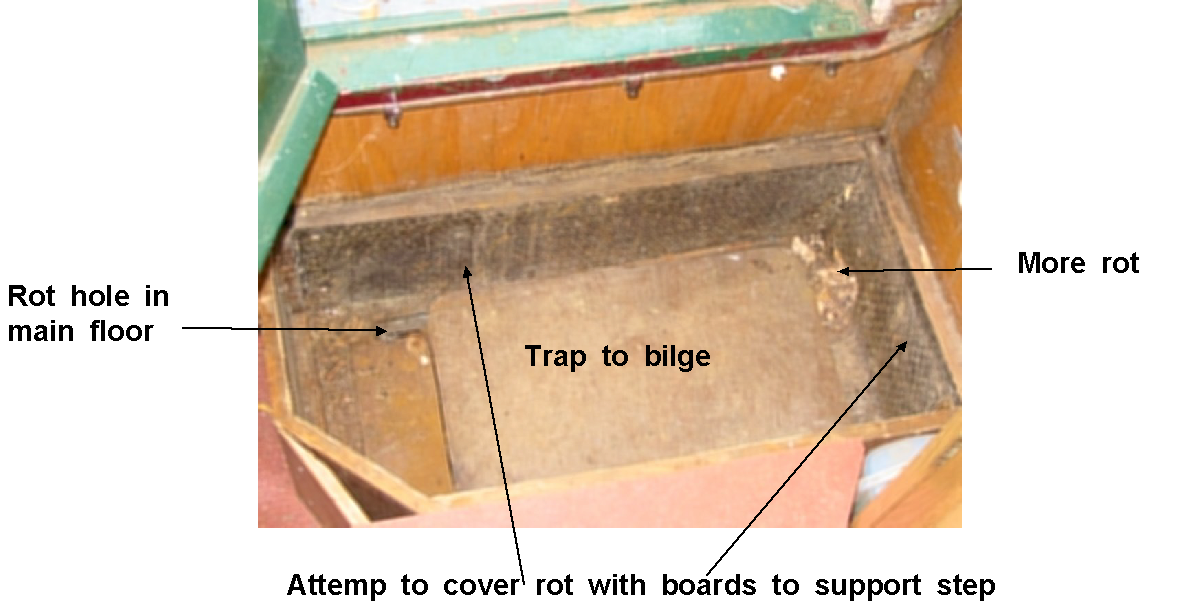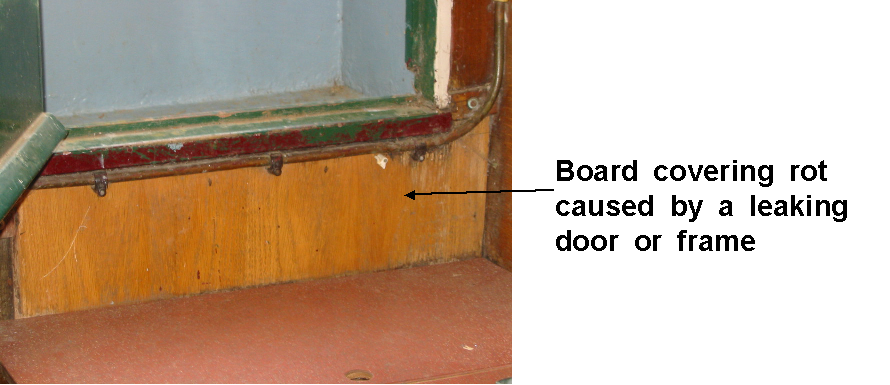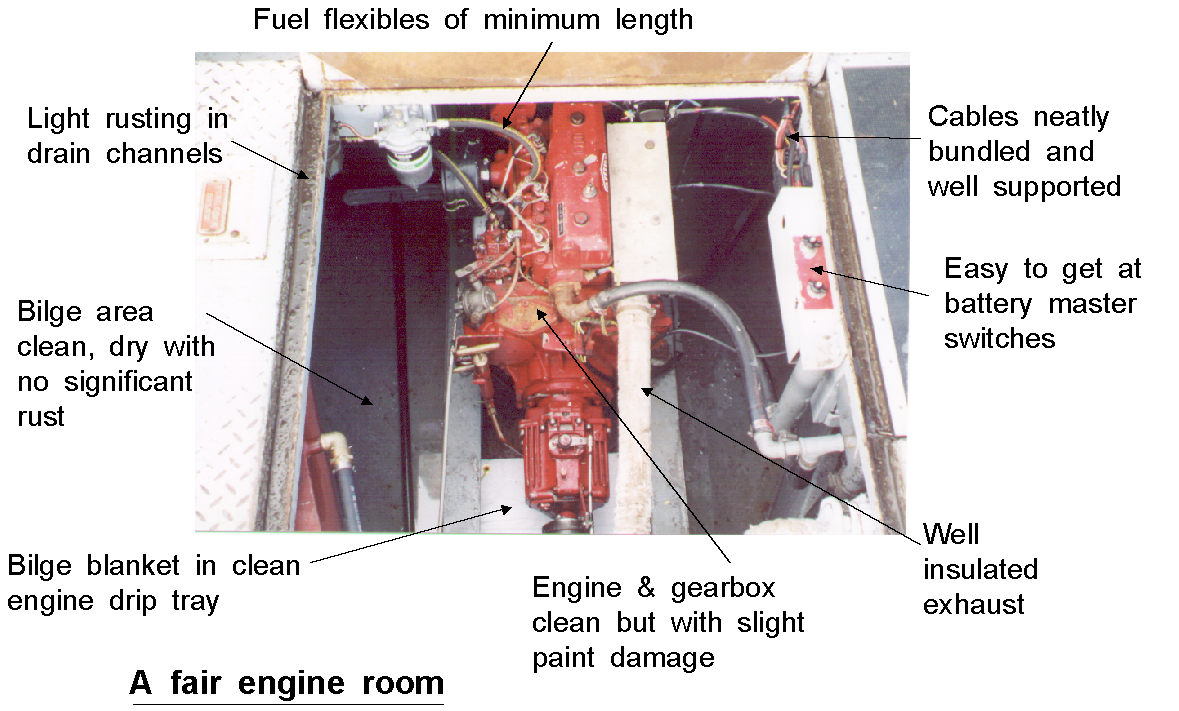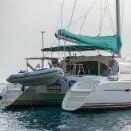Leaderboard
Popular Content
Showing content with the highest reputation on 08/05/19 in Posts
-
Just want to say a very big thank you to the CRT guys at Hurleston today, although they are only there to operate the first 2 locks as soon as they realised i was single crewed they locked me through all 4 , one guy in particular running between the locks to set both the previous lock for the next boat as well as the locks ahead of me, I certainly have no problems operating the locks myself as i do it all the time, but it was particularly welcome as it was raining and it gave me a chance to grab a hot cuppa, so thanks again guys Rick7 points
-
Does this help: Buying a Second Hand Narrowboat People who have hired or share owned boats for years will know what features they want in a boat, but people who have only had the odd holiday will almost certainly not - they may think they know but after a year's boating they often change their minds. If insufficient time is given to deciding what you want it may turn out to be an expensive mistake. Hire brochures show internal plans and outside pictures. Boat shows and visiting brokers give the opportunity to go over boats. Do not be tempted to part with money at this stage. Whatever else you do take time visiting boats and seeing how plans work in practice. Think about getting right through the boat in an emergency, how using the toilet/shower/galley will affect people moving through the boat and where your guests will sit in the open. Most important of all, gentlemen, involve your partner otherwise you might get a quick course in single-handing! Having defined what you think you need hire a few similar boats. Make sure some trips are in the winter, you may alter your plans! This will give the opportunity to sample different types of equipment like heating, toilets, cookers, engine type, the need for a cratch & cover (the “tent” at the front) and type of water tank (some need regular cleaning and painting). Try walking along the outside of the hull and decide what style of handrail you feel safest with. Use the opportunity to talk to boaters you meet. Most will happily tell you why they chose what they did and some may show you over their boat. Hiring also gives a yardstick to judge boats against. Read the newsgroups and other boat related sites on the internet and do not be afraid to ask for advice - you will probably get too much, a lot conflicting. Download or send for the latest Boat Safety Scheme regulations, study and learn them. This will allow you to judge the validity of a boat's certificate.. Before you start looking at boats with an intention to actually purchase visit any local builders who are renovating old properties. Ask them if they have any wet or dry rot that you can smell. You need to remember this musty, mushroomy smell. Boat hulls come in a variety of “qualities”. Bottom of the range will always fetch low prices however good you make them look. A top range hull bought in poor condition will fetch a good price once you smarten it. Most, but not all, narrowboats are built on an absolutely flat base-plate that is slightly wider than the actual boat so it protects the welds and lower part of the hull side. A mid-range narrow boat today will have a specification of 10-6-4. This means the base-plate is 10mm thick, the hull sides 6mm thick and the cabin sides and roof 4mm thick. If there is an extra number quoted it is the thickness of the roof. A cheaper hull may be 8-5-3 and older boats may have 6mm or thinner base plates. Now you can use the sales sheet to get an impression of hull quality. Generally the bigger the numbers the better. Typically better quality hulls have longer the swims (The “pointy” bits at either end). Expect them to be between 6 and 8 feet long on a mid-range hull. Now inspect the welds on the cabin sides. Cheap boats will have wavy cabin sides and the welds standing proud as shown. Mid range hulls will have the welds ground flush, but you will still see indentations unless someone has filled them with body filler (see fig). Top class hulls should have no visible welds and the cabin sides should be absolutely flat. You should now be able to tell if the price of the boat reflects its underlying value. Inspect the hull for signs of rust pitting. Look around the waterline and below any vents in the hull (sink/basin drain, gas tank drain, and exhaust). On a modern hull pits of less than 0.5mm or so should cause no concern. A few larger ones can be filled with weld when the boat is being blacked. Check the anodes (Silvery lumps of metal perhaps 12" x 4" x 1" welded to the hull by a steel bar, often two at the front and back) Very pitted and eroded anodes or missing anodes indicate poor maintenance and cost cutting in the past. Remember that a private seller can almost lie with impunity whilst a broker will have a clause in all their descriptions saying that anything in the sales brochure might be untrue so check the hull specification. T Buying a Second Hand Narrowboat People who have hired or share owned boats for years will know what features they want in a boat, but people who have only had the odd holiday will almost certainly not - they may think they know but after a year's boating they often change their minds. If insufficient time is given to deciding what you want it may turn out to be an expensive mistake. Hire brochures show internal plans and outside pictures. Boat shows and visiting brokers give the opportunity to go over boats. Do not be tempted to part with money at this stage. Whatever else you do take time visiting boats and seeing how plans work in practice. Think about getting right through the boat in an emergency, how using the toilet/shower/galley will affect people moving through the boat and where your guests will sit in the open. Most important of all, gentlemen, involve your partner otherwise you might get a quick course in single-handing! Having defined what you think you need hire a few similar boats. Make sure some trips are in the winter, you may alter your plans! This will give the opportunity to sample different types of equipment like heating, toilets, cookers, engine type, the need for a cratch & cover (the “tent” at the front) and type of water tank (some need regular cleaning and painting). Try walking along the outside of the hull and decide what style of handrail you feel safest with. Use the opportunity to talk to boaters you meet. Most will happily tell you why they chose what they did and some may show you over their boat. Hiring also gives a yardstick to judge boats against. Read the newsgroups and other boat related sites on the internet and do not be afraid to ask for advice - you will probably get too much, a lot conflicting. Download or send for the latest Boat Safety Scheme regulations, study and learn them. This will allow you to judge the validity of a boat's certificate.. Before you start looking at boats with an intention to actually purchase visit any local builders who are renovating old properties. Ask them if they have any wet or dry rot that you can smell. You need to remember this musty, mushroomy smell. Boat hulls come in a variety of “qualities”. Bottom of the range will always fetch low prices however good you make them look. A top range hull bought in poor condition will fetch a good price once you smarten it. Most, but not all, narrowboats are built on an absolutely flat base-plate that is slightly wider than the actual boat so it protects the welds and lower part of the hull side. A mid-range narrow boat today will have a specification of 10-6-4. This means the base-plate is 10mm thick, the hull sides 6mm thick and the cabin sides and roof 4mm thick. If there is an extra number quoted it is the thickness of the roof. A cheaper hull may be 8-5-3 and older boats may have 6mm or thinner base plates. Now you can use the sales sheet to get an impression of hull quality. Generally the bigger the numbers the better. Typically better quality hulls have longer the swims (The “pointy” bits at either end). Expect them to be between 6 and 8 feet long on a mid-range hull. Now inspect the welds on the cabin sides. Cheap boats will have wavy cabin sides and the welds standing proud as shown. Mid range hulls will have the welds ground flush, but you will still see indentations unless someone has filled them with body filler (see fig). Top class hulls should have no visible welds and the cabin sides should be absolutely flat. You should now be able to tell if the price of the boat reflects its underlying value. Inspect the hull for signs of rust pitting. Look around the waterline and below any vents in the hull (sink/basin drain, gas tank drain, and exhaust). On a modern hull pits of less than 0.5mm or so should cause no concern. A few larger ones can be filled with weld when the boat is being blacked. Check the anodes (Silvery lumps of metal perhaps 12" x 4" x 1" welded to the hull by a steel bar, often two at the front and back) Very pitted and eroded anodes or missing anodes indicate poor maintenance and cost cutting in the past. Remember that a private seller can almost lie with impunity whilst a broker will have a clause in all their descriptions saying that anything in the sales brochure might be untrue so check the hull specification. Try to borrow (or even buy - £12 from Screwfix) a 0 to 25mm micrometer. You are only interested in measuring to the nearest mm which is dead easy. (see diagram). Measure the thickness through the drains for the front cockpit and through engine room vents or where the gunnels turns over in the cockpit. Measure the roof and cabin side where it overhangs at the front or back. In all these cases allow say 0.5 mm for paint thickness. If the boat is ashore you can measure the base plate “overhang” - expect it to be worn. Now inspect the cabin sides and roof. Areas of rust that are not very pitted may lower the price, but as long as they are in full view they are repairable during painting. If, however, you see rust bubbles emanating from (say) behind a window frame there is a problem. Unless you take the frame out, fully treat the rust and repaint, the rust will keep creeping out from below the frame, and as the steel below the frame rusts it expands, pushing the frame away from the side, giving rise to leaks. Look inside cockpit lockers and all round the engine room to ensure the inside of the hull is not badly pitted. Walk through the boat sniffing and looking around windows, chimneys and roof vents. Wet cloth and rot smells tells you there is a problem with the woodwork. “Toilet” smells may indicate a lack of cleanliness or it may indicate a leaking toilet tank, low quality toilet hoses or even a gas leak. Black streaks in the wood or "water marks", bowing gaps (see fig 6), delamination of plywood or blockboard and swelling MDF all indicate present or past water leaks. At the same timed look for signs of “Conti-board” or other chipboard. This is not suitable for damp environments. Good quality fit-outs will use solid wood and possibly plywood, whilst cheaper fit outs use a lot of MDF - look in the base of any routed features. If it’s a uniform brown with no marked grain its MDF. Look in the internal channels of the windows. If they are full of moss etc the long term care of the boat is suspect, as it is if rubber cord is pulled out of place (between glass and frame) and is lying across the corners of the window. (see fig) Unscrew a switch or speaker so you can check the type and thickness of thermal insulation. Look under the gunnels and in the back of cupboards to find the wiring. This should be clipped up in neat bundles and if any individual cable feels “stiff” when bent between two fingers and the thumb it is probably solid strand domestic cable that will fracture in time. If you find any “flat” “three strand” mains cable (not mains flex) it is again an indication of poor fitting out unless it is a very old boat. Light every gas burner and ensure they all work and none burn with a yellow flame. If the fridge is gas then light that and again ensure there is no yellow in the flame. Test all the electrical equipment. The more that does not work the worse the boat has been looked after. Turn on a number of lights and operate the water pump or electric toilet, if the lights dim noticeably there is a problem. If its not flat batteries it is probably expensive and may be dangerous.. Now turn your attention to the bilges. Most boats built over the last 20 years will be of the two-bilge design. An accommodation bilge that is separated from the engine or stern bilge; but there are a few exceptions. Older boats may have “all in one” bilges, a front, accommodation, and engine bilge (again separate) or the front bilge may be piped through the accommodation bilge into the engine bilge. At the back of the cabin, usually under the steps or in a cupboard there should be a trap to give access to the accommodation bilge. The bilge should be dry in an insulated boat. If it is not it indicates leaking, possibly windows, water system, toilet system, or shower/bath system and pump. If it’s the latter you may well see soap scum or smell the soap. If you have turned the water pump on and you hear it running now and again it may well indicate a domestic water leak. If the water is clear and the pump is silent then it is probably condensation or window leaks. Very often this is the area where wood rot can be found You can expect the baseplate to be rusty on an older boat and it is of little consequence unless either the baseplate is thin or deeply pitted (say 1mm +). There should not be any wet carpet or floor covering in this area. If there is water present or wet floor coverings question the maintenance. Now look at the engine - make it clear to the vendor/broker that you will be running the engine and checking the gearbox. Look into the engine coolant header tank. The level should be at least an inch below the filler neck, but it can be far lower as long as you can see the coolant. It should not be thick and brown like cocoa, the colour of the antifreeze should be visible. Very rusty, “thick” water indicates a lack of maintenance and possible corrosion inside the cooling system. Run your hand over the batteries and engine. If you feel warmth make another appointment and insist that the batteries are not charged or the engine without you being present. If there are any explanations or excuses as to why the batteries needed charging just before viewing or why they are flat question the charging system and estimate between £60 and £120 per battery for new ones. The engine should start easily from cold and any white smoke should stop after a few minutes. If the engine is equipped with heater/glow plugs allow up to 30 seconds for these to do their job. The longer it takes to start and the more/longer it smokes the worse condition the engine is in. Move the control lever to ahead and rev the engine. Note how long it takes for the propeller shaft to start to rotate. Repeat with reverse. Both should take similar time for the shaft to come up to speed and the longer it takes the more chance the gearbox is worn out. A clang or thud as the gears engage may indicate a faulty drive plate or gearbox. Leave the engine running. Inspect the batteries. If they have grown “fur” on the terminals the boat has not been well looked after. If the end of any battery is bowing out and swelling the battery is nearing the end of its life. The larger the bow the shorter its remaining life. At either side of the engine and behind it there is a bilge where there may be a little water but there should be no oil. If the whole area is covered in black oil with pieces of dirt or rag floating in it the boat has not been well looked after. Under the engine there should be a sealed area. I would like to see this clean and free from all oil and water. A bilge blanket here to absorb and oil or fuel drips shows care. Again if this area is full of oil and water the boat has not been maintained well. Ideally the whole of the area should be well painted with little signs of rust, a film of dust and the odd oily area is acceptable. There should be no major oil or rust streaks on the engine, no build up of oily dirt and no pools of oil or water on it. Now the engine is getting warm, take the oil filler cap off and rev the engine. There will be a certain amount of pressure coming from the filler (compare with other boats and even your car) but excess pressure or smoky fumes indicate engine problems. If there is a pressure gauge check the oil pressure. On a modern (not air cooled Listers) expect more than 15psi on idle and over 35psi when revving when hot. Stop the engine, pause, and check the engine and gearbox dipstick for level. The engine oil should be fairly black but runny. Water gives oils a whitish tinge, this is a bad sign. Smell the engine oil, if you can smell diesel there is a problem. At last - take the boat for a run, if a river is nearby give it a bit of an upstream thrash to ensure the engine does not overheat or make excessive smoke. Compare the vibration, noise and "stopping ability" with the boats you hired. If you are still satisfied it is time to make an offer "subject to survey" and make sure it is understood that final price is dependant upon the survey. Now you only have to find a legal mooring! ry to borrow (or even buy - £12 from Screwfix) a 0 to 25mm micrometer. You are only interested in measuring to the nearest mm which is dead easy. (see diagram). Measure the thickness through the drains for the front cockpit and through engine room vents or where the gunnels turns over in the cockpit. Measure the roof and cabin side where it overhangs at the front or back. In all these cases allow say 0.5 mm for paint thickness. If the boat is ashore you can measure the base plate “overhang” - expect it to be worn. Now inspect the cabin sides and roof. Areas of rust that are not very pitted may lower the price, but as long as they are in full view they are repairable during painting. If, however, you see rust bubbles emanating from (say) behind a window frame there is a problem. Unless you take the frame out, fully treat the rust and repaint, the rust will keep creeping out from below the frame, and as the steel below the frame rusts it expands, pushing the frame away from the side, giving rise to leaks. Look inside cockpit lockers and all round the engine room to ensure the inside of the hull is not badly pitted. Walk through the boat sniffing and looking around windows, chimneys and roof vents. Wet cloth and rot smells tells you there is a problem with the woodwork. “Toilet” smells may indicate a lack of cleanliness or it may indicate a leaking toilet tank, low quality toilet hoses or even a gas leak. Black streaks in the wood or "water marks", bowing gaps (see fig 6), delamination of plywood or blockboard and swelling MDF all indicate present or past water leaks. At the same timed look for signs of “Conti-board” or other chipboard. This is not suitable for damp environments. Good quality fit-outs will use solid wood and possibly plywood, whilst cheaper fit outs use a lot of MDF - look in the base of any routed features. If it’s a uniform brown with no marked grain its MDF. Look in the internal channels of the windows. If they are full of moss etc the long term care of the boat is suspect, as it is if rubber cord is pulled out of place (between glass and frame) and is lying across the corners of the window. (see fig) Unscrew a switch or speaker so you can check the type and thickness of thermal insulation. Look under the gunnels and in the back of cupboards to find the wiring. This should be clipped up in neat bundles and if any individual cable feels “stiff” when bent between two fingers and the thumb it is probably solid strand domestic cable that will fracture in time. If you find any “flat” “three strand” mains cable (not mains flex) it is again an indication of poor fitting out unless it is a very old boat. Light every gas burner and ensure they all work and none burn with a yellow flame. If the fridge is gas then light that and again ensure there is no yellow in the flame. Test all the electrical equipment. The more that does not work the worse the boat has been looked after. Turn on a number of lights and operate the water pump or electric toilet, if the lights dim noticeably there is a problem. If its not flat batteries it is probably expensive and may be dangerous.. Now turn your attention to the bilges. Most boats built over the last 20 years will be of the two-bilge design. An accommodation bilge that is separated from the engine or stern bilge; but there are a few exceptions. Older boats may have “all in one” bilges, a front, accommodation, and engine bilge (again separate) or the front bilge may be piped through the accommodation bilge into the engine bilge. At the back of the cabin, usually under the steps or in a cupboard there should be a trap to give access to the accommodation bilge. The bilge should be dry in an insulated boat. If it is not it indicates leaking, possibly windows, water system, toilet system, or shower/bath system and pump. If it’s the latter you may well see soap scum or smell the soap. If you have turned the water pump on and you hear it running now and again it may well indicate a domestic water leak. If the water is clear and the pump is silent then it is probably condensation or window leaks. Very often this is the area where wood rot can be found You can expect the baseplate to be rusty on an older boat and it is of little consequence unless either the baseplate is thin or deeply pitted (say 1mm +). There should not be any wet carpet or floor covering in this area. If there is water present or wet floor coverings question the maintenance. Now look at the engine - make it clear to the vendor/broker that you will be running the engine and checking the gearbox. Look into the engine coolant header tank. The level should be at least an inch below the filler neck, but it can be far lower as long as you can see the coolant. It should not be thick and brown like cocoa, the colour of the antifreeze should be visible. Very rusty, “thick” water indicates a lack of maintenance and possible corrosion inside the cooling system. Run your hand over the batteries and engine. If you feel warmth make another appointment and insist that the batteries are not charged or the engine without you being present. If there are any explanations or excuses as to why the batteries needed charging just before viewing or why they are flat question the charging system and estimate between £60 and £120 per battery for new ones. The engine should start easily from cold and any white smoke should stop after a few minutes. If the engine is equipped with heater/glow plugs allow up to 30 seconds for these to do their job. The longer it takes to start and the more/longer it smokes the worse condition the engine is in. Move the control lever to ahead and rev the engine. Note how long it takes for the propeller shaft to start to rotate. Repeat with reverse. Both should take similar time for the shaft to come up to speed and the longer it takes the more chance the gearbox is worn out. A clang or thud as the gears engage may indicate a faulty drive plate or gearbox. Leave the engine running. Inspect the batteries. If they have grown “fur” on the terminals the boat has not been well looked after. If the end of any battery is bowing out and swelling the battery is nearing the end of its life. The larger the bow the shorter its remaining life. At either side of the engine and behind it there is a bilge where there may be a little water but there should be no oil. If the whole area is covered in black oil with pieces of dirt or rag floating in it the boat has not been well looked after. Under the engine there should be a sealed area. I would like to see this clean and free from all oil and water. A bilge blanket here to absorb and oil or fuel drips shows care. Again if this area is full of oil and water the boat has not been maintained well. Ideally the whole of the area should be well painted with little signs of rust, a film of dust and the odd oily area is acceptable. There should be no major oil or rust streaks on the engine, no build up of oily dirt and no pools of oil or water on it. Now the engine is getting warm, take the oil filler cap off and rev the engine. There will be a certain amount of pressure coming from the filler (compare with other boats and even your car) but excess pressure or smoky fumes indicate engine problems. If there is a pressure gauge check the oil pressure. On a modern (not air cooled Listers) expect more than 15psi on idle and over 35psi when revving when hot. Stop the engine, pause, and check the engine and gearbox dipstick for level. The engine oil should be fairly black but runny. Water gives oils a whitish tinge, this is a bad sign. Smell the engine oil, if you can smell diesel there is a problem. At last - take the boat for a run, if a river is nearby give it a bit of an upstream thrash to ensure the engine does not overheat or make excessive smoke. Compare the vibration, noise and "stopping ability" with the boats you hired. If you are still satisfied it is time to make an offer "subject to survey" and make sure it is understood that final price is dependant upon the survey. Now you only have to find a legal mooring!5 points
-
This post cannot be displayed because it is in a forum which requires at least 10 posts to view.
-
3 points
-
3 points
-
3 points
-
UPDATE! Fitted Dr Bob's used BMV 501 on Monday and hey presto, all is working as it should! So my corrupt/naff 501 is heading for the bin. A big THANKS to Bob and Pam, it was lovely meeting you both!3 points
-
If it was "darn sarf" (well London anyway) it would be welcomed as it would remove the need to move every14 days... ?3 points
-
3 points
-
To be fair, I don't think I've ever had a volunteer tell me they do it because they want to help boaters: they usually say it is to give them something to do, get them out of the house, and enjoy the interaction with people. One made me laugh when he said if he stayed at home the missus would only find him something less interesting to do!3 points
-
The vollies give up their own time volunteering for free. Why the heck should they work out in the pouring rain for hours if they don't wish to. Would you? Or do you?3 points
-
I don't, but then it took me the whole of my working life in a very demanding career just to be able to afford to buy and run a boat and I also pay for a mooring, so I clearly don't know how to work the system properly.3 points
-
This afternoon the electric lift bridge at Wrenbury decided to play up, within 30 minutes 2 guys arrived and sorted it, thats twice in 24 hours i have been greatful of their service, well done guys another email to the area office to tell them what a great job your doing Rick?2 points
-
Had many happy years on the canals, then bought the 'fat-boat' (the 14 foot beam cruiser NOT the 23 foot beam Catamaran) and had the last 4 years on the Rivers - costs seem to be ever increasing, and the new 'owners' at BWML are after their 'pound of flesh'. I have had one boat in BWML Kings Marina for about 7 or 8 years and another boat in BWML - Hull for a couple of years (both at the same time) so they have had a fair few pennies from me. Last year we moved the boat from Hull down to Plymouth, but having negotiated a 'loyalty discount' kept the other one at Kings. This year an almost £500 increase in mooring fees at Kings and after discussions "no discounts allowed on instruction of the management - they need to increase their income to fund the planned improvements" means we will be moving on. - as it happens, our mooring is shown as being one of those that is being made into a 'floating homes' mooring, so we'd be moved anyway. My fees at Kings : 2016/17 £1369 2017/18 £1739 2018/19 £1763 2019/20 £2220 I suggested that they may regret their stance as they lose more moorers than they gain from their increases - I was told that my concerns would be passed onto 'Senior management'. So, its time to move onwards and upwards. It looks like it will be Lowestoft we'll head to. £1800 per annum, No Licence fees, No BSS, no worries. It is 2 1/2 hours (111 miles from home) but Que Será, Será.2 points
-
2 points
-
This post cannot be displayed because it is in a forum which requires at least 10 posts to view.
-
I think it would be incumbent upon C&RT to make sure the amended reduced width dimensions were widely available, including at either end of the canal and on the approaches to the narrowed section. I think too it would then be up to all interested parties to contest the right of C&RT to arbitrarilly reduce the dimensions of that particular waterway given the historic use by previous vessels of the original dimensions.2 points
-
Mike the Boilerman is...Victor Meldrew ! ("I don't belieeeeve it")2 points
-
This post cannot be displayed because it is in a forum which requires at least 10 posts to view.
-
This post cannot be displayed because it is in a forum which requires at least 10 posts to view.
-
I thought I would share my experience trying to improve my internet and phone communications whilst out on the cut. For a number of reasons it is essential that I can have a reliable connection, especially internet wherever possible. As a CC for at least six months of the year the need for something more reliable than the standard ‘3’ Mi-Fi offering (as good as it is) quickly became apparent. The forums search facility will bring up many useful threads on the subject of improving both internet and phone communications. There are many ideas bandied about, some more worthy than others, such as dongles wrapped in plastic bags or yoghurt pots and dangling by bits of string from chimneys and such like. They work with varying degrees of success. I know, I’ve tried most of them at one time or another. Having experimented with different ideas over the past couple of years I have come to the inevitable conclusion that in order to have the best chance of receiving a reliable signal for both phone and internet you really need to invest in some serious equipment. Of course there are those that the ‘Heath Robinson’ approach is more than satisfactory and indeed may well give excellent results in the right location. But those who travel the system extensively and need reliable internet/phone connection for business say, will probably need something more ‘fit for purpose’. Internet I think it’s well recognised, and it’s also my experience, that the ‘3’ network has the most extensive and reliable coverage of the canal system. I had one of their standard Huawei ‘Mi-Fi’ units that didn’t have the external aerial socket and found that, although generally quite good, it did have limitations as to reception and performance. I then purchased via Amazon the Huawei E5332 which did have an external aerial socket (TS9 connection). I initially tried connecting that to a 12 inch magnetic mount aerial placed on the roof and that improved reception a great deal. But there were still many locations I found it gave no reliable signal reception. In those locations I found taping the mag aerial to the top of my boat hook raised vertically did indeed generally improve the reception. I did a lot more research and eventually decided on a demountable 2 metre mast with an aerial from Connex Technologies. http://www.connextech.co.uk/3g-external-high-gain-omni-antenna-bundle---600603-253-p.asp Their aerial comes fitted with 5 metres of cable and the TS9 pig tail required to connect to the Mi-Fi unit and costs about £120 This proved to be the ‘bees knees’ and with this aerial mounted atop the 2 metre mast I got reliable internet connection on ‘3’ just about everywhere we go. I installed this ‘enhanced’ system in the Spring of 2013 and has proved its worth during our extensive cruise last summer. As we try and use 12v wherever possible I also purchased an in car charger unit for the MI-Fi from Maplins which saves having to use the inverter. Although the Mi-Fi unit has about a 5 hour battery life, if we are moored up for a couple of days or so, using as much 12v equipment wherever possible is preferable in my opinion. We also have 530 watts of solar panels which provides all our electrical needs in the summer when not cruising. Recently we had a need for a second Mi-Fi unit and rather than go for another E5332, as good as it is, I thought technology may have improved and the latest offering from ‘3’ is the Huawei E5756. It is more expensive than their standard unit but it does have the external TS9 socket. Apparently this also has two internal aerials and is more sensitive to signal reception and can in fact use two cell masts at the same time if they are both in range. I gave it a try, first without the external aerial and alongside the E5332 and it is definitely faster opening identical pages on two identical laptop computers. Then I connected both to the external aerials (I now have two mast aerials, see later in this report) and again the E5756 was noticeably faster than the E5332 opening identical pages on identical laptops. Technology has definitely improved in the two years since I purchased the E5332. E5756 mifi with patch lead and 12v power lead Phone Although our requirement for phone communication is not as pressing as our need for internet, there are occasions when it is necessary. I have a contract with Vodafone which gives me loads of free minutes, but on the cut it has proved a pretty useless network. We also have a couple of cheap Nokia phones on ‘Pay-As-You-Go’, one on ‘3’ and the other on O2. Unsurprisingly the ‘3’ network is quite good, but for some unknown reason the ‘3’ telephone signal is usually weaker than the Mi-Fi signal. The O2 signal is also generally quite good, certainly better than Vodafone, but can be very patchy in coverage. It is quite irritating to have to move around the boat to find an area that has the best signal strength, often having to go outside to have any decent call quality. Even then, often speech communication can be quite difficult if not impossible. I did at one point invest in a mag aerial from Boaters Phone Co, with a Velcro, wrap around, ‘passive’ patch lead for my iPhone 4S and found it made absolutely no difference to my signal quality. The iPhone doesn’t have an external aerial socket. In fairness I have spoken to others who use that system with the Velcro and they say it does make an improvement. It just goes to show that everyone’s experience can be very different. Following on from the good performance of the Mi-Fi and the Connex aerial I decided to see if I could improve telephone performance by the same amount. Very few, if any, of the current offerings of handsets that I have come across have an external aerial socket. However on investigation I did learn that the Samsung S2, S3, S4, and quite possibly the new S5 do have an external aerial socket. However this is not generally publicised and is installed primarily for Samsung service technicians during maintenance. It is hidden away behind the battery cover and has its own small round plastic cover concealing the actual socket. On the S3 it’s marked by the code ‘W1’ next to it but, depending on model can also have a second one marked ‘W2’. Generally ‘W1’ should be used. The cover can be prised off using a very small screwdriver. Some models of Samsung the aerial cover is I believe also marked ‘R1’ and ‘R2’. But that’s where it got confusing, my eyes started glazing over and I lost interest! I was thinking of treating myself to a newer phone so opted to buy a used Samsung S3. So all reference is made to the S3. It only has just the one socket, hidden under the ‘W1’ cover. Pic of rear of Samsung S3 As far as I am aware, there is only one supplier of patch leads for the Samsung, they are Telco Antennas in Australia. www.telcoantennas.com.au They do cater for other phones so if you are thinking of modifying yours, it is worth checking their website to see if your phone might be suitable. Some patch leads they offer though, including for the iPhone, are of the ‘passive’ type. Although I have never used the ones from Telco, I personally have found that, in general, the performance of the passive type disappointing. That was based on an iPhone 4S and a basic Nokia and Samsung phone. I also tried the passive patch lead on my original Mi-Fi unit and found it made no discernable difference. I purchased a couple of patch leads from Telco and also a rear battery cover pre-drilled in the correct position for the socket. http://www.telcoantennas.com.au/site/samsung-galaxy-s3-patch-lead-and-back-cover-combo The plug and socket connection is very secure, but I would be wary of continually removing the patch lead from the phone as it seems a little fragile and might just damage either the plug or socket. I have decided to keep the Samsung just for the boat when we are aboard. Sort of like a home phone. The patch lead comes with an SMA female connector on one end and the Samsung plug on the other. Altogether it’s about A$65 (two patch leads and a back cover drilled to fit) plus A$32 shipping (in addition I was stung for £19 customs duty when it arrived in the UK!) Very impressed with Telco though, and DHL the shipper. It was in my hand just 36 hours after ordering it! Someone of course will now point out that there is a supplier of patch leads in Braunston and/or at the Crick show and they cost £5 each! Frankly, I don’t want to know! I wish to remain in blissful ignorance, thank you! Caution. If you try and use a DIY approach by pushing a thin wire into the centre hole of the aerial socket you could seriously damage its internal aerial which won’t work again without major and expensive surgery back at Samsung. It is important to use a purpose made patch lead. The connector supplied with the patch lead (SMA female) also fitted the connector on the Connex external aerial (SMA male) which I had been using for the Mi-Fi, and it worked perfectly. Inside the boat, before connection I was getting one or two bars of signal strength, occasionally losing signal altogether. Once connected, the signal jumped straight to a solid five bars. Call quality is superb! I have been operating this now for a couple of months and I am very pleased with the set up. I purchased a second dedicated aerial from Connex to use for the phone and that is also mounted atop the mast next to the Mi-Fi aerial. I did think about the possibility of running both the Mi-Fi and the phone from the same aerial, but that might affect the quality of the signal to both so thought better of it. The Mast I mount the mast, which is a 38mm diameter, 2 metre high stainless tube, in a couple of brackets fixed to the forward face of my roof top box, which also incorporates four 100 watt solar panels. The mast can be lifted in or out of the mounts in just a few seconds. It can be removed entirely for secure stowage inside the boat when left unattended. The cables run across the roof and in through a saloon hopper window to the various adjacent receivers. They can be unplugged or reconnected in just a couple of minutes when erecting or removing the mast for storage. mast mount on top box TV Having gone to the trouble and expense of fitting the mast, it seemed an ideal place to put my Avtex ‘figure of eight’ omni directional freeview TV aerial. http://www.midlandchandlers.co.uk/Catalogue/ProductDetail/aerial-avtex-12v-digital-sth1000?productID=a23362c3-cbf1-40b0-aca8-2eaf41aea332&catalogueLevelItemID=a4a42a16-1cad-4748-90d3-70ba5a71f73e It generally works very well most places we go. As we prefer to moor in out of the way places there are occasions when we can’t get a good signal for the TV. Last year, at the Crick show I bought a ‘Toura Plus’ antenna with a mount that can convert quickly from vertical to horizontal polarity, and has a built in amplifier powered by the TV’s 5v powered aerial socket. http://www.midlandchandlers.co.uk/Catalogue/ProductDetail/aerial-toura-plus-uhf-antenna-7db-22db-?productID=3ca5b2cb-8aee-4582-b250-b828c0978841&catalogueLevelItemID=a4a42a16-1cad-4748-90d3-70ba5a71f73e Most new TV’s have the 5v facility, usually buried away in the settings menu. I have found it a superb aerial and is allied to the excellent ‘Antenna Aligner’ app on my iPhone which points to the nearest transmitter. As the mast can be rotated easily, I just turn it until the TV aerial is pointing towards the transmitter. A few seconds and the jobs done! When not required, eg cruising, the mast lays in a couple of purpose made wooden blocks on the forward roof. The mast can be erected or removed in about 20 seconds! Great if it’s raining! As I have an interest in meteorology it seemed an obvious place to mount a small wireless weather station on the top. Interestingly, (and off topic, I know, - well it is my thread!) as a result of fitting the weather station, specifically its windspeed readout and historical data record over the last two years, it has become quite clear that mounting a wind generator, in our experience, would be a complete waste of time and money. The number of days that it would have produced any worthwhile power was in reality, very few. And several of those days were of the ‘bright and breezy’ type where our solar was performing well anyway. Of course there are those who swear by their windgens, but I think they are few and far between and must be moored in very exposed places Conclusion Prior to embarking on this little project it seemed that, in general, I got a good Mi-Fi signal about 25% of the time, a barely usable signal about another 25% of the time and the rest (50%) no useable signal when out on the cut. The mobile phone was not much better which is why I had three networks to try and get at least one useable signal. I guess, between the three networks, I was successful about 70% of the time. Since fitting this equipment I have improved the score on the Mi-Fi to I would say, well in excess of 80% although in practice I can’t think of anywhere that I haven’t got at least a useable signal. More usually, I get a good to excellent signal. Even in Braunston, a ‘black hole’ for me when it comes to phone signals, I can get a useable signal. On the phone network side, it seems a toss up between O2 and ‘3’ with the Samsung on the external aerial. The balance so far I think just favours ‘3’. The jury is still out on that, however signal reception is much better using the Connex aerial regardless of network. Vodafone still languishes in third place! Typical, as all my free minutes are on Vodafone! I won’t change contract though as when I travel abroad, which I do regularly, Vodafone is far superior! The waterways I’ve used them on so far are the River Thames, North/South Oxford, Grand Union Main Line and Leicester Line, Coventry, Ashby, River Soar, Erewash, T&M, River Trent and Bridgewater Canal. These are just my thoughts and experience with playing around with various items of equipment. I hope some may find them useful. Others may well think my ideas are ‘overkill’ and find the ‘plastic bag and yoghurt pot’ approach more than adequate for their needs. It’s ‘horses for courses’ at the end of the day. I required something more suited to my needs. Previously I have searched the forum for a ‘Bizzard’ solution but can’t seem to find one, which is truly surprising and disappointing! I would have been very interested in that, and may well have saved me a lot of effort to say nothing of a small fortune! Ken1 point
-
This post cannot be displayed because it is in a forum which requires at least 10 posts to view.
-
No, no it isn't! Although they do get the added 3D experience of it coming through the sides as well.1 point
-
1 point
-
1 point
-
They then stood by and watched me run around like an idiot working two locks without offering a hand.1 point
-
This post cannot be displayed because it is in a forum which requires at least 10 posts to view.
-
This post cannot be displayed because it is in a forum which requires at least 10 posts to view.
-
Do the whole of the Leeds and Liverpool single-handed then tell us you don't welcome any help with swing bridges!1 point
-
1 point
-
I have done it every time I have surveyed a boat before purchase. Take a pole longer than the beam. hang 2 strings with plumbobs from near the ends. Put pole across roof, plumbobs on outside of both gunwales/rubbing strakes, measure between strings on pole. Simples.1 point
-
Yes National Assistance seems both accurate and honest, dunnit. I dislike this tendency we have to rename stuff with layers of euphemisms. Universal credit is a good example. The slight social stigma of receiving National Assistance gets disguised by calling it Unemployment Benefit. The stigma creeps back in so they change it to Job Seekers' Allowance, and so on. The same happened with disability. ISTR as a child people in wheelchairs being honestly known as cripples, because that is what had happened to them. No disrespect ever intended but then it became 'disabled', now its 'wheelchair users'.1 point
-
Thanks for all the comments.... I'm the owner of the boat in question. To clear up a few points: - The boat in question is exactly 13'6 beam - She has been through the lock in question (In both directions) several times throughout the years without incident. - The lock chamber itself is 13'10-13'11 - The engineers on site said that if we were 13'6 we should get through (We are) - We got stuck on the newly built brickwork on the lower exit which now measures a maximum of 13'5 - Whilst the published dimensions are NOW 13'1, this is a recent change (That we weren't aware of - nobody told us that they had narrowed the canal). It used to be 13'6. Basically, they changed the rules of the game mid-play.1 point
-
This post cannot be displayed because it is in a forum which requires at least 10 posts to view.
-
Glad it worked Mark!! Great to meet you at Weedon. Catch up with you again.1 point
-
The thread i actually started? ... i think i might have done! ... essentially to summise your comments Mike and with te greatest respect, firstly you say you dont see vlockies, then you question their intentions and commitment if they choose not to get soaked whilst volunteering in their own time, then you go on to relate what its costing you to use the system whereas they are essentially getting the joy of using the locks for free! ... sorry if i am being dim but none of it corrulates to me ..... do you ever question Daniel and the team of mods that give their time for free to make this site what it is if they arent there to mod a post at 3am because they choose to sleep! ... in all cases whatever the reason someone volunteers is immaterial I an just very greatful people do. Rick1 point
-
This post cannot be displayed because it is in a forum which requires at least 10 posts to view.
-
It all goes back to funding and funding goes back to politics. The UK system is probably the most heavily used and also the most expensive for the boat owner in the world. Its income must be amongst the highest in the world (happy to be corrected if I'm wrong), Its never going to make a 'profit' no matter what anyone does but it supports a lot of jobs and is a big part of the tourist industry. Volunteering is really just enabling the country to run it on the cheap, like volunteering in libraries or schools and hospitals, If I ware to do that it would be entirely for my own pleasure and if it was a bit chilly or it started to rain I would be off like a shot.1 point
-
This post cannot be displayed because it is in a forum which requires at least 10 posts to view.
-
Leaving the canal clear for those with waterproofs and a weird way of enjoying themselves Some of my best canal memories have been in heavy rain Richard1 point
-
I think there’s a flaw in this logic. The bit that’s voluntary is whether or not you choose to give your time to provide the service in the first place. Once you have made that choice then you have effectively made a commitment to others - be it the trust/society you have volunteered for, the people who are receiving the service concerned or those who fund it since no voluntary scheme is without costs. The majority of people who volunteer their time have to deliver a prescribed output to a defined timescale. I do up to 10 days a year of canal volunteering work outdoors all of which involves fulfilling some form of commitment to someone - half of it will be for paying customers - and if it rains I will get wet. So my answers to your questions are “yes” and “yes”. In the case of the volunteer lock-keeper scheme the approach of “they’re volunteers so they don’t have to do it” means that for all the efforts CRT go to in recruiting, training and equipping the volunteers the level of service they commit as an offer to boaters is nil. While I acknowledge I regularly receive welcome assistance from volunteer lock assistants until such time as CRT can publish dates, times and locations where assistance will be available the scheme can only ever be regarded as being run for the benefit of the volunteer and not the boater. This may of course be part of CRTs wider wellbeing strategy but it means it is entirely legitimate for any boater to regard the scheme with indifference. Anyway when it rains hard most boaters tie up so the volunteers can huddle round in their cabin and drink tea. JP1 point
-
Its absolutely hissing it down here. Train into Oxford for a session today sometime ? Some poor sods in an Anglo squelch have just cruised past, for some reason which defies logic a private boat is now passing as we speak1 point
-
This post cannot be displayed because it is in a forum which requires at least 10 posts to view.
-
It might just be over-propped. My boat has a 55hp Isuzu which revs to 3000rmp out of gear but would only rev to 2300rpm in gear in open water, which meant I was only actually getting about 42hp according to the engine power curves. I had the prop pitch reduced by an inch and a half and half an inch taken off the diameter and now I get about 2700rpm and a lot more power.1 point
-
Long Lining is almost a forgotten art. It's difficult, dangerous, and usually only any real use on close lock flights with a loaded butty. Here The Narrow Boat Trust practice the art on the Wolverhampton 21: Youtube Clicky Enjoy, Myk1 point
-
In the perfect world a battery should be recharged to 100% immediately after use, in the real world that is not really possible, but we should try to recharge to 100% every day, or every couple of days. Anything less than 100% results in your battery becoming sulphated. The fact that it was at 50% when you left it shows that it was well below fully charged, even before taking it down to 11.4 volts during the following week. Think of a 5 litre bucket of water. When new it holds 5 litres. If we drop some 'mud' (sulphation) into the bottom of the bucket it is still a 5 litre bucket but now it only holds 4 litres of water. Repeat with more 'mud' and it now holds 3 litres of water Repeat ……. now only holds 2 litre Repeat …………...It is still a 5 litre bucket but now holds 1 litre of water. Your 12 volt battery is still 12 volts but it 'capacity' has been reduced by sulphation for every day it has been left. You need to get it on charge for 12-24 hours to get it as fully charged as it will. Only then will you find out how severe the damage is.1 point
-
I could not disagree more. There is considerable evidence that, for a number of reasons, Ellesmere Port are unable to care for most of their floating exhibits in a way that satisfactorily preserves their history. I would prefer them to concentrate their efforts on the boats that they already have, especially those placed in storage (I have had a one to one tour of the boats in storage and I understand why and how this situation has arisen). ANTONY has an interesting history, although some of what is currently quoted in its advertisement is questionalbe, and it must represent a good opportunity for an enthusiast to enter the world of 'historic' boats without the high levels of financial expenditure that is usually demanded - initially anyway1 point
-
Hi everyone... My name is Kayleigh I am one of the staff at the Shroppie Fly. It has changed hands and the new landlady and landlord Lucy and Simon have it now are dedicated to making your experience of the Shroppie Fly a lovely and enjoyable one! There is a fantastic menu with plenty to choose from and Sunday roasts which we serve till 4 or until the roasts are gone. We have plenty of seats inside and outside... we love doggies so they are welcome to. We have a variety of Gins and cask ales, definitely something for everyone! So please come in and see for yourselves and we can restore your faith in the Shroppie Fly again.1 point
-
1 point
-
Crikey, didn't realise it was almost a year ago that I bought the boat, how time flies! Prompted by a thread encouraging the use of this section, here's the boat's journey so far. Point 1) " Do something about the paint and blacking, hopefully stripping it off to reveal a pristine, undamaged gelcoat underneath" Well we all knew that wasn't ever going to go to plan... Ah, the perks of a GRP boat- easy road transport (by an insured haulier, not me) I then started to crack on removing the old blacking, carefully using the blade from an old plane to scrape it off. It had become brittle from the UV (I assume) so scraped off quite easily, nevertheless it wasn't exactly pleasant, especially with no functioning shower on the boat or in the yard. It was upon washing my hands at the end of the day that I discovered that swarfega does absolute wonders for removing the blacking, so the following day (much to the amusement of other yard users) i slathered the hull in Swarfega, left it for a couple of hours and pressure washed it off. This did largely remove all of the remaining blacking. It became clear that she has had a fair few coats of paint in her lifetime, so getting it back to gelcoat was going to be an impossible task. Instead, the hull was primed with Tekaloid and painted. At this point i feel the need to add that the colour choice was somewhat accidental, I intended for it to be in the classic Highbridge colours of brown and cream, instead it's closer to sickly yellow and safety orange, but i stuck with it. I don't think it turned out too bad really ! Shame it rained on my gunwhale paint though. Next time i'll move on to updating you all on the outdrive work. Thanks for reading!1 point
This leaderboard is set to London/GMT+01:00

